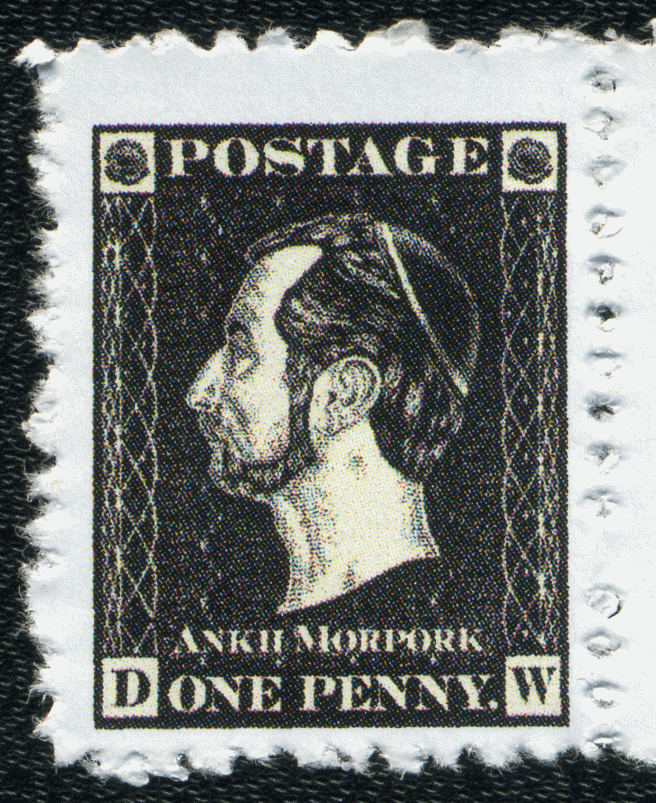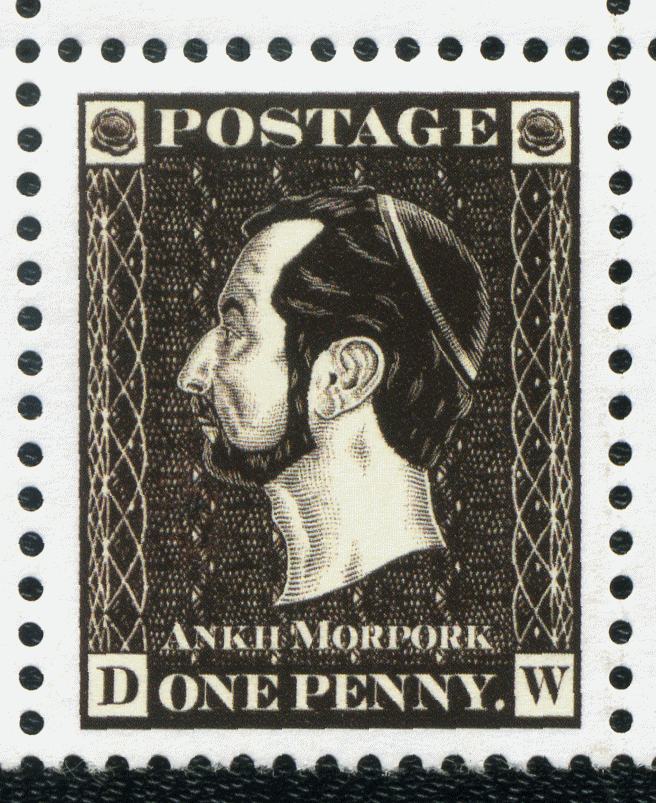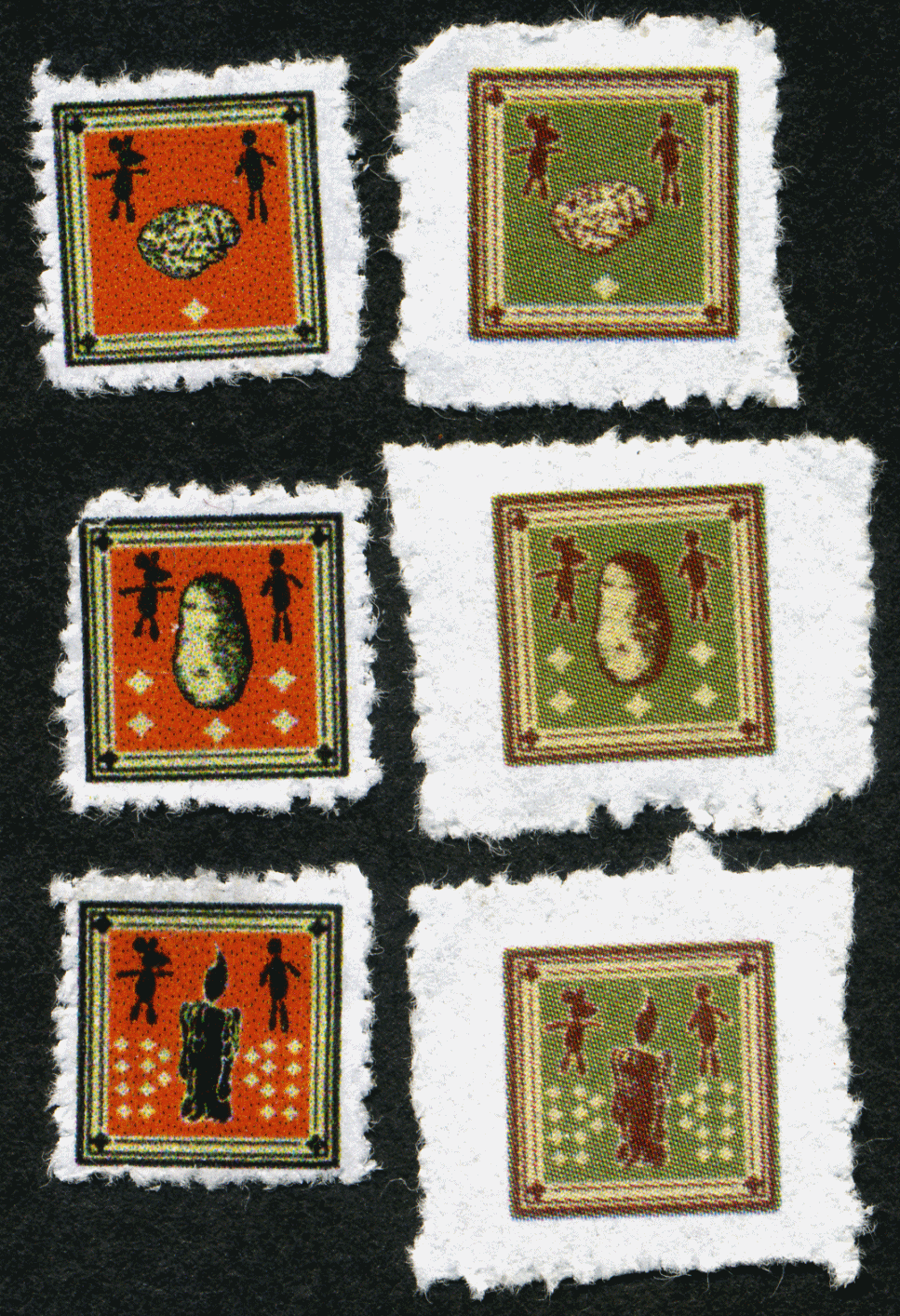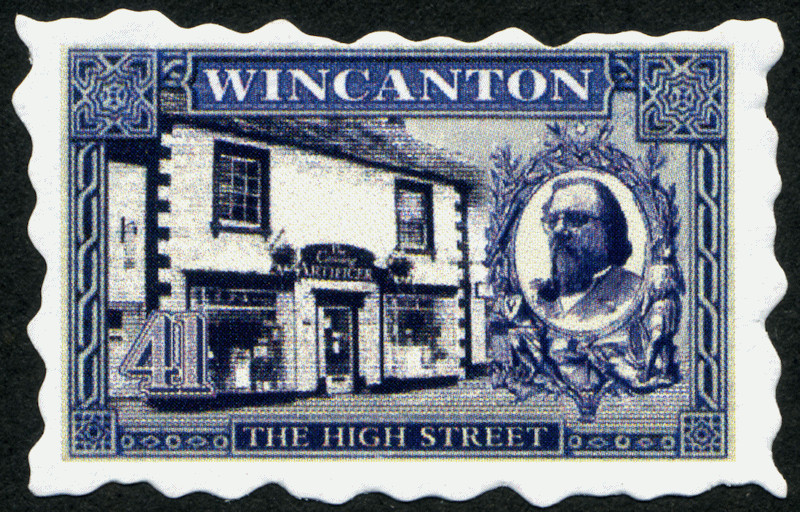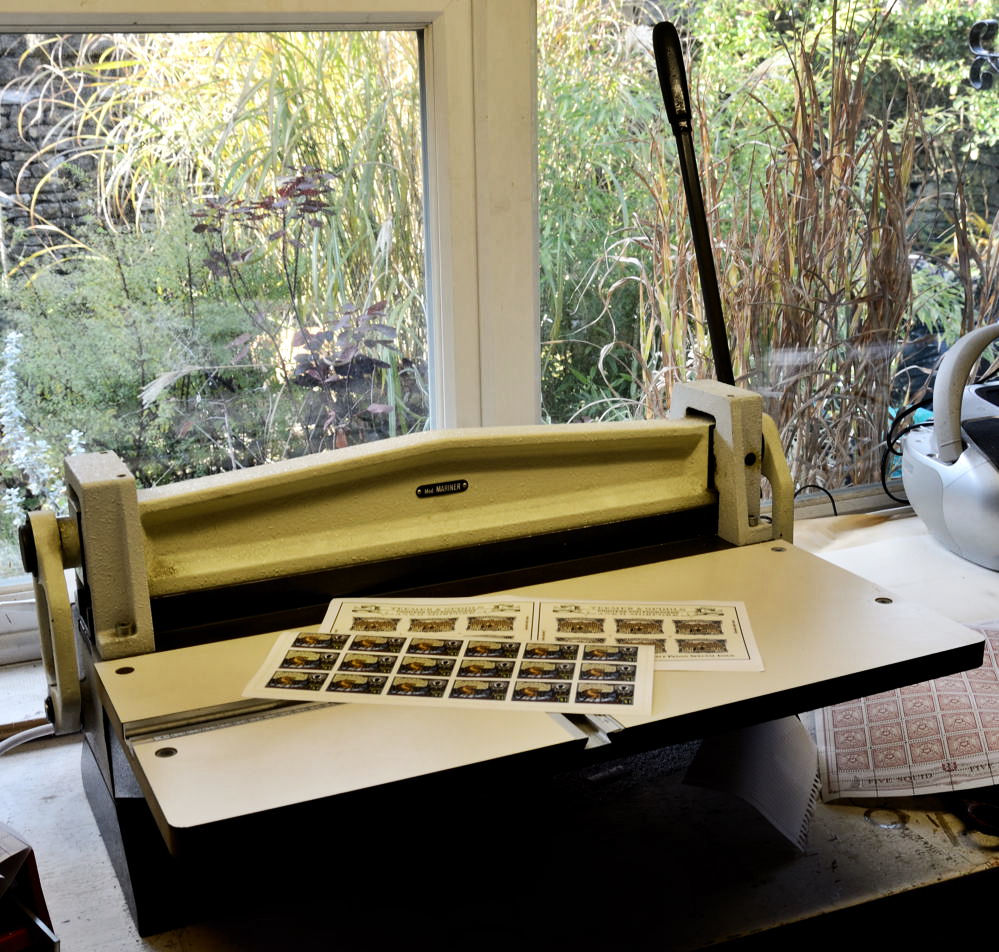
Perforation Guide
Perforations are holes punched through paper to guide the tearing of the paper. The holes are made using a row of hollow needles. Perforations are measured using the number of pins per two centimetres.
The first Discworld stamps to be issued, the Ankh-Morpork definitives, were perforated at the Bath Postal Museum using the rare Victorian stamp perforating machine. The machine had not been used for years and it took trial and error to get acceptable perforations. The initial attempt caused the sheets to rip. These became to be known as rat-nibbled.
It was later that it was discovered that beeswax rubbed onto the needles would improve the perforations. Unfortunately, the Museum closed in September 2023.
There are other sets of perforation used on the Discworld stamps. Machine, Wincanton and Rat Clawed perforation plus the Wrinkly and Straight Cut or Unperforated.
After careful calculation the sheet looses about 3.67% of its weight after being perforated which for an A4 sheet is about 0.18 grams.
You can read about perforations here on Wikipedia and here on the Stamp Bear sites
.And an excellent site on Perforating machines.

